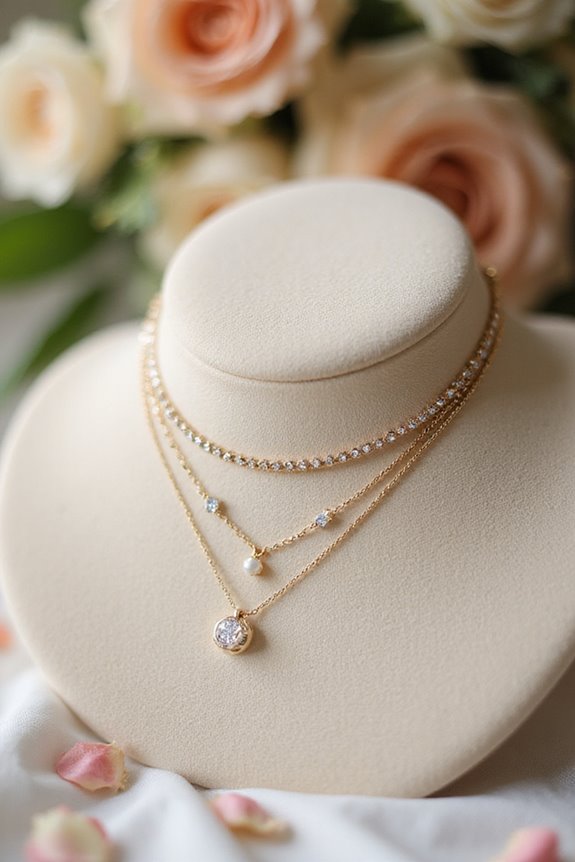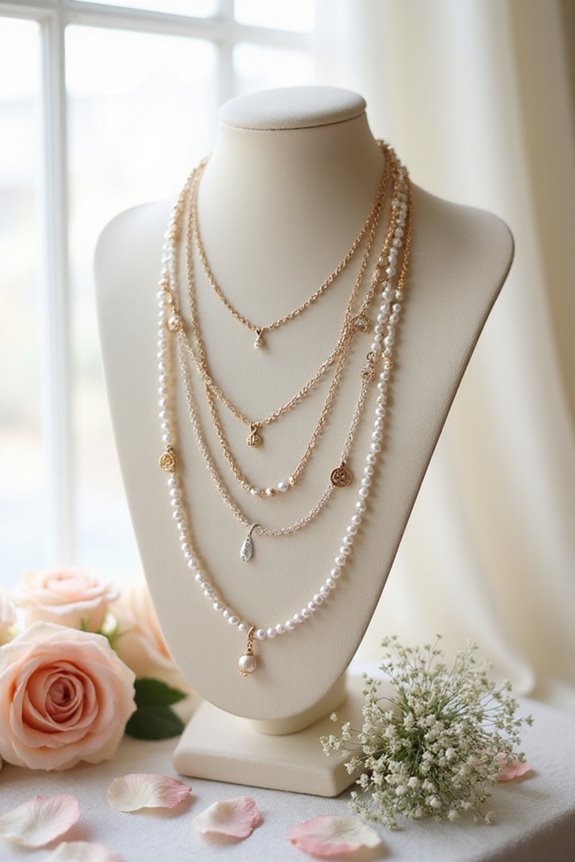When we’re on the hunt for antique pieces, hallmarks are our best friends! Look for the maker’s mark to identify the craftsman behind the art. Don’t skip the metal purity marks, like “925” for sterling silver or “18k” for gold—these tell us the quality. And remember date letters and assay office marks, as they reveal the piece’s age and origin. So, keep an eye out for those intriguing symbols—they could lead us to some fantastic finds! And there’s more to uncover!
Key Takeaways
- Look for maker’s marks to identify the craftsman and establish the authenticity of the antique piece.
- Check metal purity marks, such as “925” for sterling silver or “18k” for gold, to determine quality.
- Examine date letters which indicate when the piece was hallmarked, providing insight into its age.
- Identify assay office marks, like the anchor for Birmingham, to understand the origin of the piece.
- Use reference books or online databases to research and verify any hidden marks for additional historical context.
Understanding Hallmarks on Jewelry
Have you ever wondered how to decode those tiny symbols on your jewelry? Understanding hallmark significance is key to verifying jewelry authenticity. First, let’s locate these marks—often hidden on clasps or inside bands. We might need a magnifying glass to see them clearly.
Next, we’ll find different types of marks: the maker’s mark tells us who crafted it, while the metal purity mark reveals the gold or silver quality.
If we’re unsure, online databases and reference books can help us research. And don’t forget to check for hidden marks; they can be tiny but mighty in telling a piece’s story! So, let’s become hallmark detectives and uncover the secrets behind our cherished jewelry.
Deciphering Silverware Hallmarks
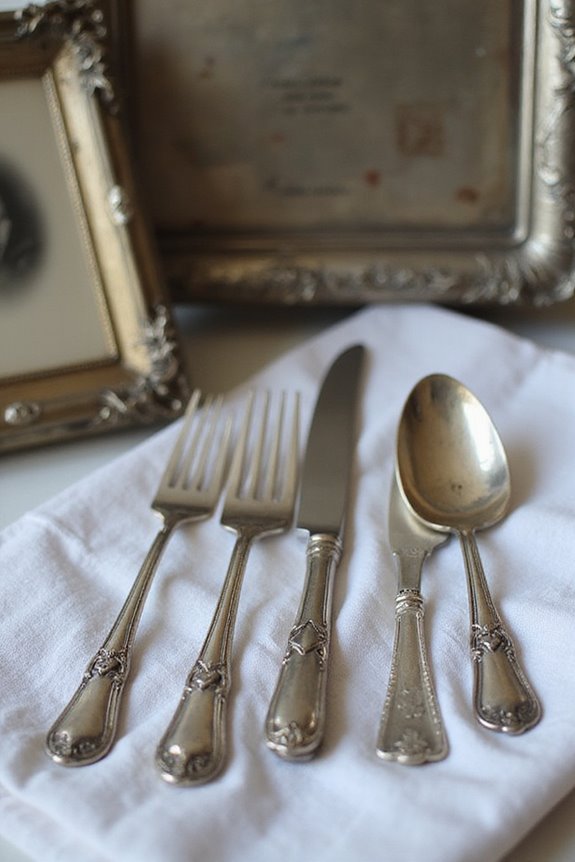
When it comes to deciphering silverware hallmarks, what if we could reveal the secrets of our treasured pieces with just a bit of knowledge? First, let’s focus on maker identification. Look for those initials or symbols that tell us who crafted our items. Don’t forget to check for hallmark variations, as small differences can lead us to entirely different silversmiths!
Next, familiarize ourselves with standard and assay office marks—like the lion passant for sterling silver. These symbols guide us in understanding the piece’s authenticity and origin. If we’re unsure about date letters, reference tables can be lifesavers. By piecing together these clues, we can appreciate our silverware’s history just like detectives on a thrilling case!
Identifying Pottery and Porcelain Maker’s Marks
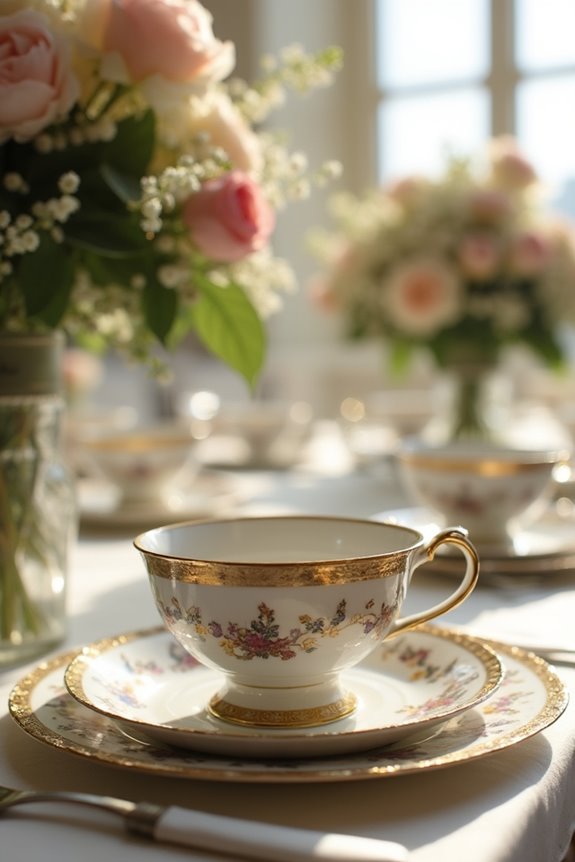
How can we uncover the stories behind our pottery and porcelain treasures? First, we should look for maker’s marks, which can tell us a lot about a piece’s origin. Using pottery identification techniques, we can distinguish factory marks, workman marks, and pattern marks. For example, a crown symbol might indicate a well-known factory.
When authenticating porcelain pieces, we must verify the marks against trusted sources, as forgeries are common. We can use online databases to compare our finds with documented examples. If a mark is faded, grabbing a magnifying glass can help us see the details. Remember, the thrill is in the hunt! Let’s enjoy the journey of discovering the history behind our cherished items.
Recognizing Metal Content and Purity Indicators
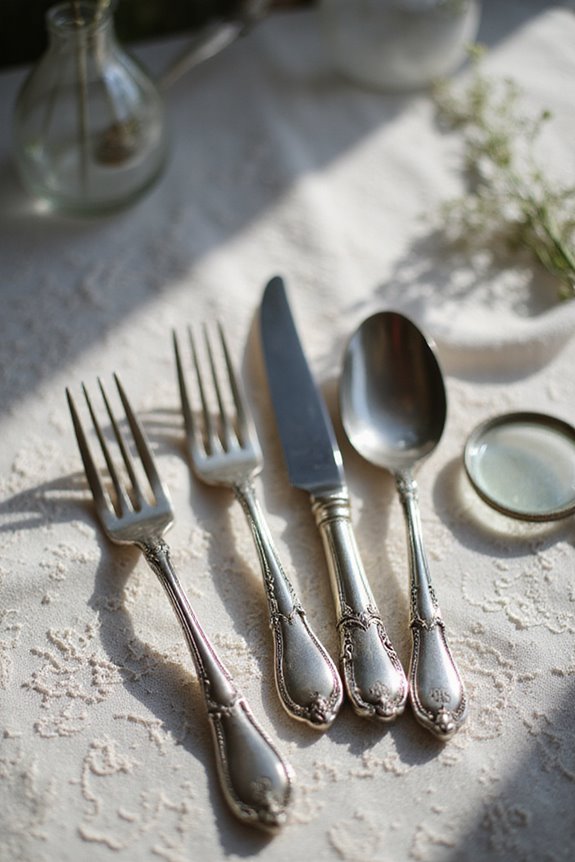
While exploring our cherished metal pieces, it’s essential to understand what those little marks mean. These hallmark symbols tell us about metal purity, revealing how much precious metal is present. For instance, if we see “18k,” it means the piece is 75% pure gold. Similarly, “925” indicates sterling silver—yup, that’s 92.5% silver!
When we spot a lion passant or a crown symbol, we’re looking at silver or gold, respectively. It’s like a secret code for quality! And don’t forget those parts per thousand numbers for European pieces. Knowing these indicators helps us appreciate our antiques even more, ensuring we’re not just collecting pretty things, but valuable ones too. Happy hunting!
The Importance of Date Letters and Assay Office Marks
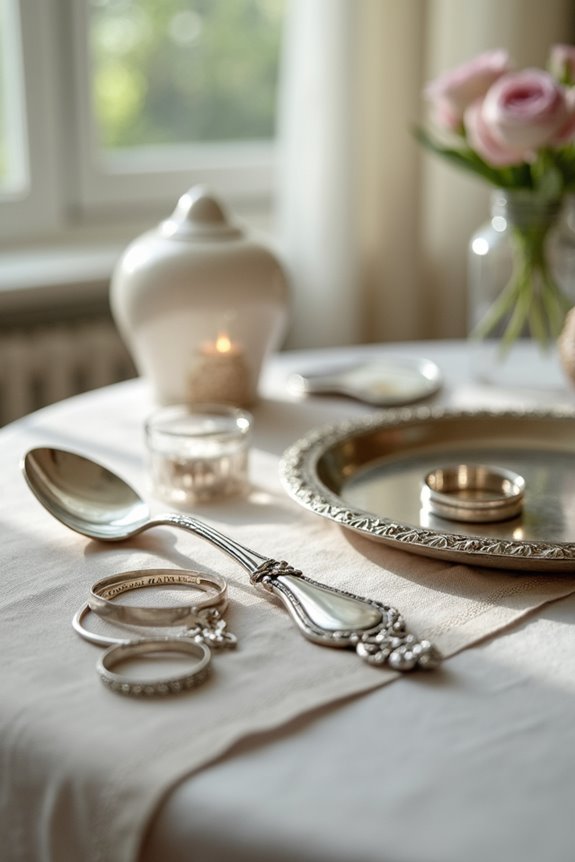
Understanding the marks on our antique treasures goes beyond just metal content; it opens a door to their history. The date letter identification tells us when a piece was hallmarked, which is essential for dating vintage items. Each assay office has its unique symbols, like the anchor for Birmingham or the leopard’s head for London, adding to the assay office significance.
When we combine these marks, we gain a clearer picture of the piece’s past. For instance, a date letter from Chester could suggest an item’s age is pre-1962. So, let’s keep handy charts or online resources to decode these marks! Knowing these details helps us authenticate our treasures and appreciate their history even more.
Frequently Asked Questions
How Can I Clean Antique Pieces Without Damaging Hallmarks?
When we clean antique pieces, we should use gentle cleaning techniques and preservation methods. Employing mild soaps and soft tools helps protect hallmarks, ensuring their integrity remains intact while keeping our treasures looking beautiful.
Are Hallmarks Always Visible on Antique Items?
Like hidden treasures beneath the surface, hallmarks aren’t always visible on antique items. Their significance in authentication can be obscured by time and wear, requiring careful inspection to uncover these essential identifiers.
What if a Hallmark Is Worn or Illegible?
When we encounter worn hallmarks, identifying marks can be tricky. We should use magnification tools and gentle cleaning methods, while consulting experts to help reveal hidden details and guarantee accurate assessments of our treasured pieces.
Can Hallmarks Be Faked or Reproduced?
Imagine uncovering a treasure only to find fake hallmarks lurking beneath the surface. We understand hallmark history reveals forgery’s dark allure, making it essential for us to stay vigilant and informed about these deceptive marks.
How Do I Differentiate Between Similar Maker’S Marks?
When we’re diving into maker’s mark identification, we should focus on distinguishing features like unique symbols, craftsmanship quality, and era-specific designs. Researching thoroughly helps us differentiate between similar marks effectively.


